Here's What It's Like To Donate Plasma & Join Canada's Stem Cell Registry In One Afternoon
For years, I've been known to friends as the "mom" of the group. As a self-described empath, supporting in any form — physically, mentally, emotionally — comes as naturally to me as blinking. That's why finding ways to help Canadian Blood Services save lives was something I've always been drawn to.
The best part about joining Canada's Lifeline is that there are so many ways you can help. Most people know of whole blood donations, but you can also donate plasma, stem cells, organs and tissues, time, money and more to support patients through Canadian Blood Services.
Once I knew I could do more to help, I went to the Canadian Blood Services website, signed up for a plasma donation and ordered my buccal swab kit to join the stem cell registry.
And that's how I ended up joining the registry and donating plasma all in one day, and here's what that was like!
Joining the Canadian Blood Services Stem Cell Registry
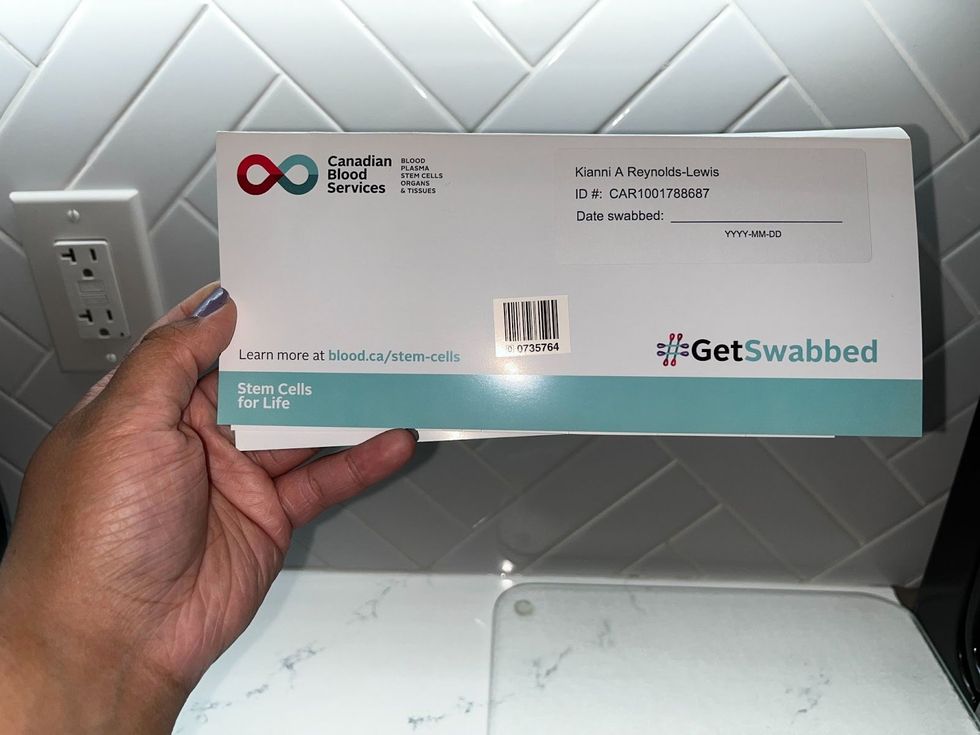
I kicked things off by opening up my swab kit that was sent directly to my home after I signed up online to join the stem cell registry.
I first learned about the registry through a Canadian Blood Services TV commercial. It talked about the need for diversity among donors because patients are more likely to match with someone who shares the same ethnic background.
As someone who's half-Jamaican and half-Caucasian, I can't help but think: "What if that was me?" It would mean the world to me and my family if another mixed-race person could and wanted to help.
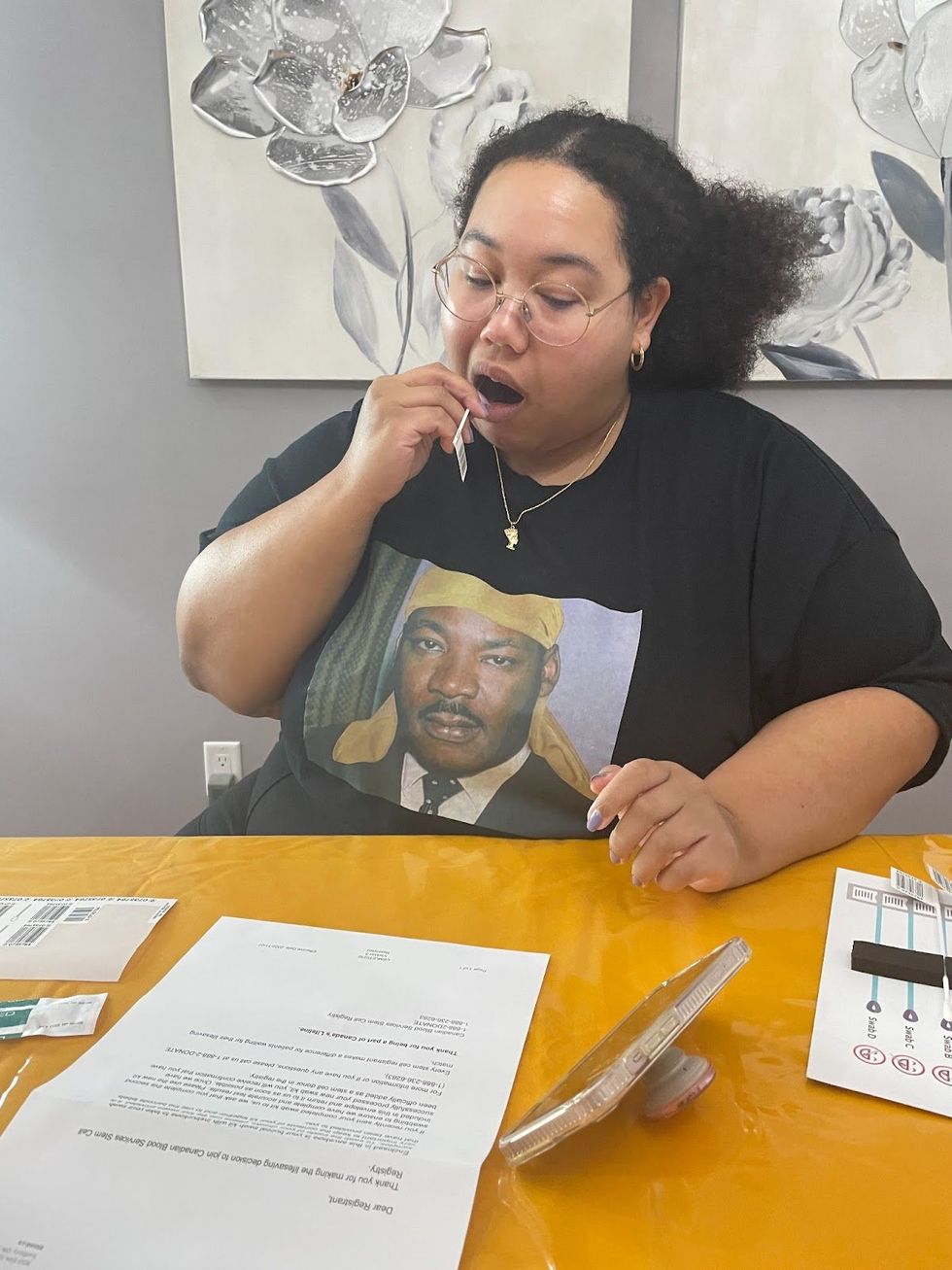
Collecting the samples for the kit is easier than brushing your teeth. You swab your cheeks, upper and lower, then slot the swabs into a special envelope. Watching the video tutorial quickly remedied anything I needed clarification on.
The samples will be used to see if I'm eligible to join the registry and become a potential donor. If I end up being a match and donating my stem cells, I could help someone with blood cancer, a bone marrow deficiency disease, anemia, an immune disorder or any number of other conditions.
Donating plasma with Canadian Blood Services
With my stem cell swab kit completed and sealed up, it was time to head to the donor centre. It had been a long time since I'd donated whole blood, so I was eager to make another donation — this time, plasma.
Roughly half of your blood is made up of plasma, and you can donate it in a similar way to whole blood. Donated plasma is given to patients who need transfusions or made into medications that help people who have bleeding disorders, immunodeficiency conditions or are recovering from severe burns.

Comfort was the style for the day: A simple white tee, grey sweatpants and, because I'm a cool kid, Crocs with Jibbitz. Here in Alberta, a "warm" day in October can be minus 10 degrees, so I also threw in my cozy teddy bear jacket.
Checking in at the donor centre was super easy, and there was free parking. I was greeted by a friendly staff member who asked me about my day and how I was feeling. The Friday vibes were truly on point. While waiting, I met Jasmine Vallarta, the territory manager for donor relations at my donor centre and a genuinely lovely person.
Having donated whole blood in the past, I was familiar with the pre-donation process — which was completely seamless. The person who checked me in was so friendly, and we bonded over our love for large tote bags. From there, I was passed into the skillful hands of Percy, the most warm and welcoming soul you'll ever meet.
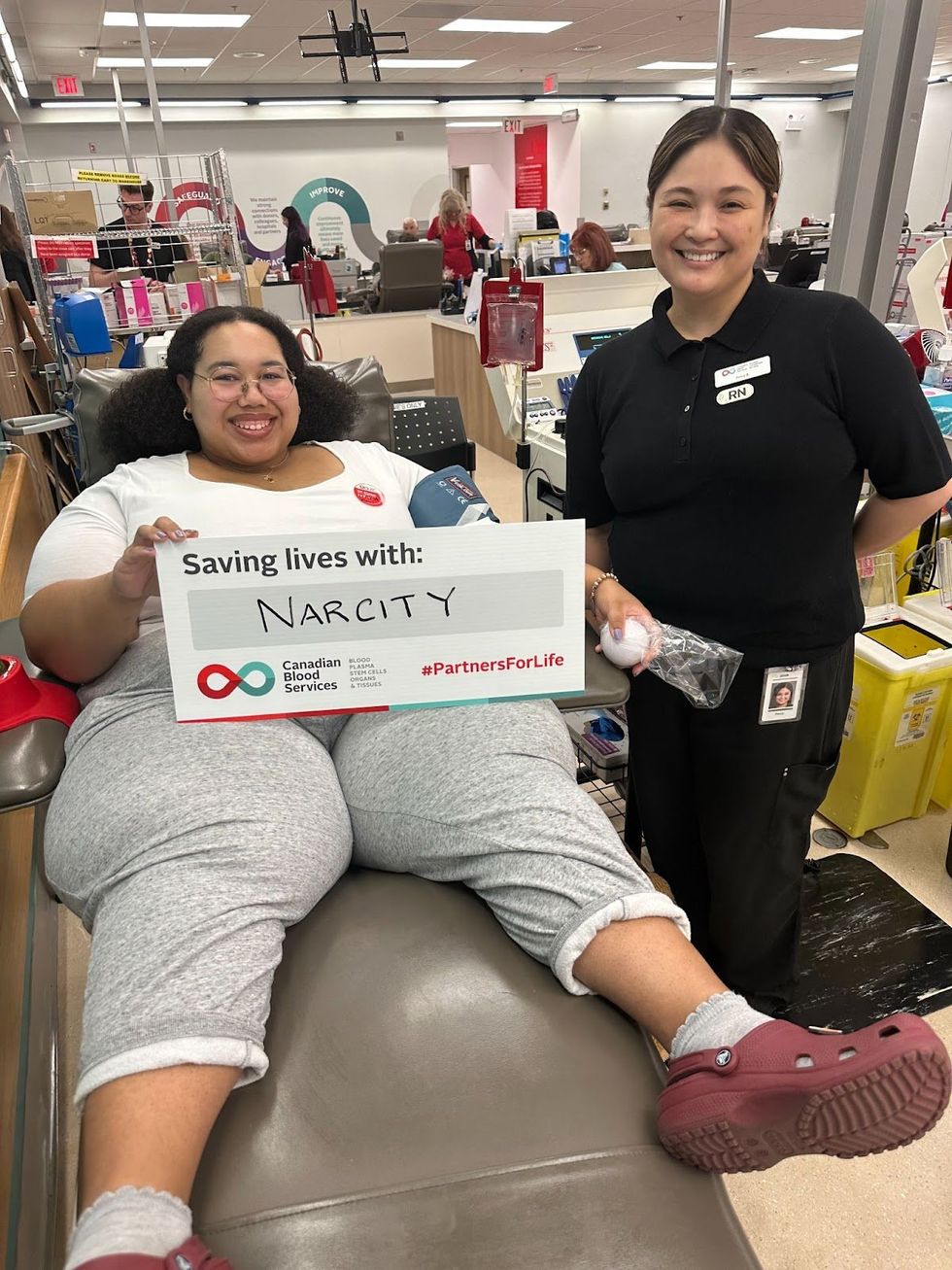
Percy is a registered nurse who has been working with Canadian Blood Services for two years. I felt completely safe and comfortable the whole time, and I have Percy to thank for that. She thoroughly explained every step as she went along and also told me all about how the plasma they collect is used.
Percy's humour was also top-tier. While showing me pictures and explaining the different shades of plasma, she said: "So plasma comes in a few different colours, from apple juice, mango juice to a nice IPA – whatever your drink of choice is."
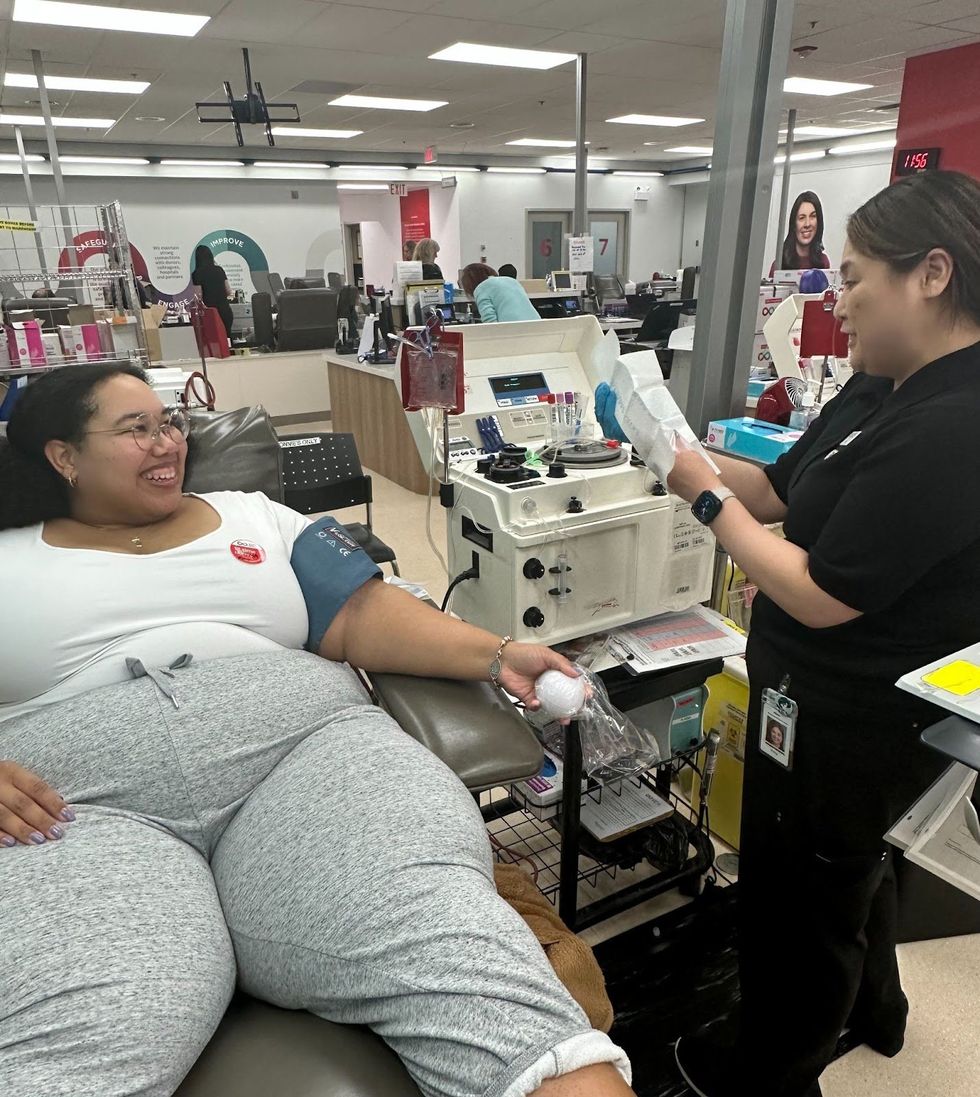
She also complimented my "nice big vein" and the "beautiful colour" of my plasma. Now, where else will you hear such unique and satisfying compliments like that? Everyone deserves a hype person like Percy.
Before heading to the other donors, Percy made sure I had everything I needed. Each plasma donation can take around 45 minutes, so it helps to have everything you need within reach.
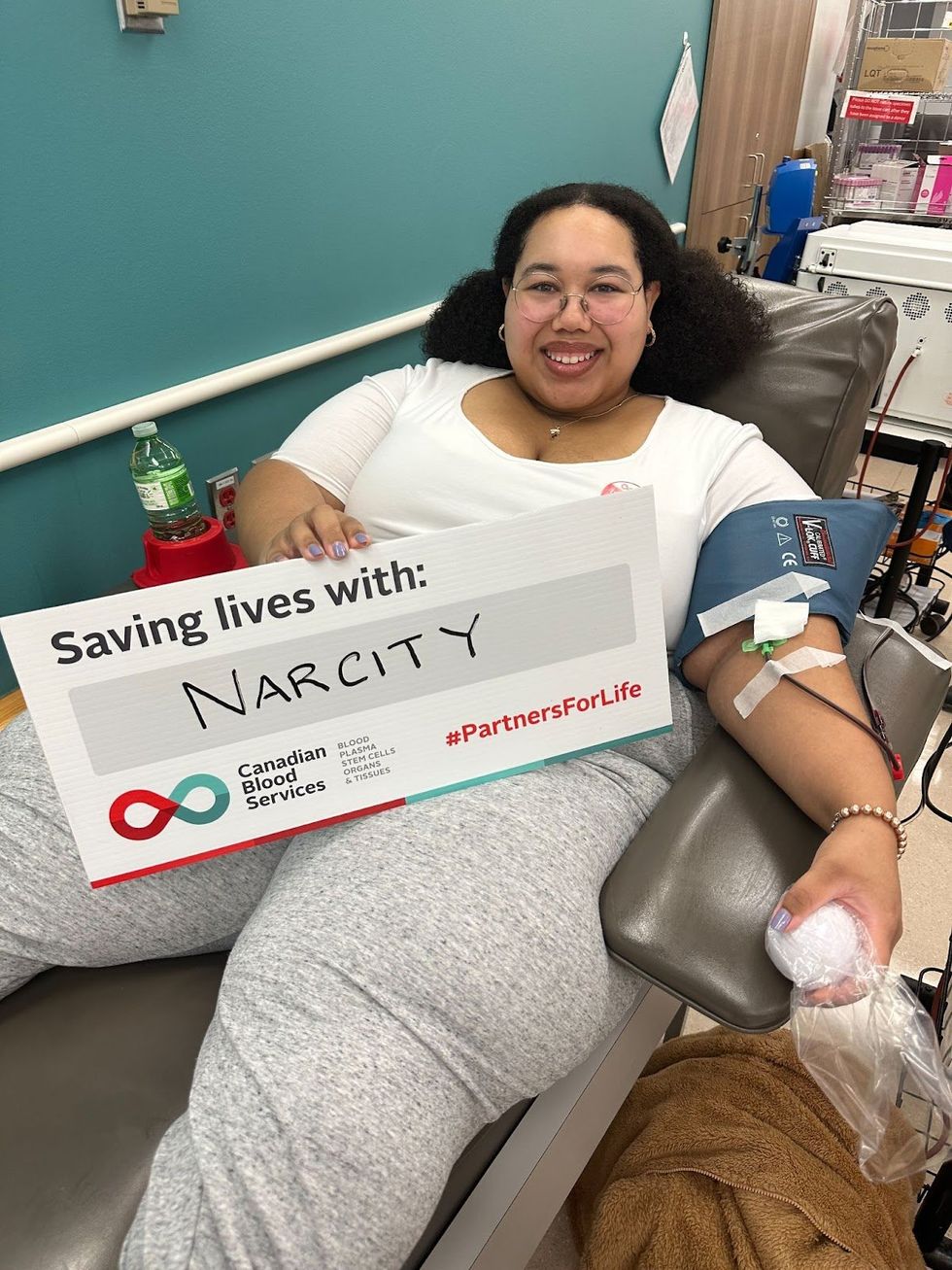
Seeing everyone get the same excellent treatment showed how much Canadian Blood Services has donors' best interests in mind. Jasmine was even kind enough to take my swab kit for the stem cell registry, which saved me the trouble of mailing it back.
Let's talk about snacks
Once my donation was complete, I returned to the refreshment area and the most popular spot in the donor centre — the snack table.
Dividing two sections full of couches was a long island holding a sea of delicious treats to help you refuel after your appointment. On display were fruit juice boxes, pop, Cheetos and Lay's chips, classic Oreos, gluten-free honey and coconut granola bars and a tray full of large, individually packaged Cookies by George.
Fun fact: The family who owns Cookies by George are donors too and have such a great relationship with Canadian Blood Services that they donate around 700 cookies to the Edmonton location every week.
Unfortunately, I couldn't try one because of my nut allergy, but they certainly looked amazing. Instead, I had a nut-free granola bar and apple juice, and it was exactly the kind of replenishment I needed after my donation.
Overall, I had a fantastic time donating plasma. The Canadian Blood Services staff has a special way of making you feel like you're part of a family. They care about you and are super appreciative of you taking the time to help out.
If you're considering donating, Canadian Blood Services needs more plasma donors. Components of plasma only take a few days to regenerate too, so you can donate every week as long as you're feeling well. Joining the stem cell registry is also another fantastic way to give back, and there are plenty more ways you can help save lives with Canada's Lifeline.
To learn more about Canadian Blood Services, visit their website or follow them on Facebook, Instagram, X or YouTube.
The information in this article is not intended and should not be construed as medical advice. Consult your health care provider before making any health care decisions or for guidance about a specific medical condition.





